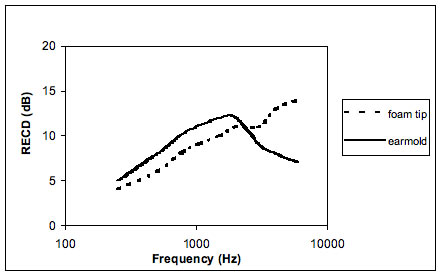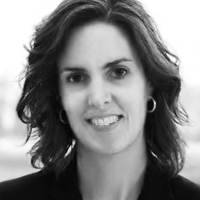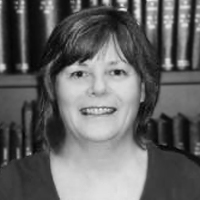Question
What is the difference between a foam tip and an earmold RECD?
Answer
The main difference will be noted in the high-frequency region. An RECD measured with a foam tip will show a reduction in values starting around 3 or 4 kHz. When an earmold from a toddler or adult is used in place of a standard foam tip, the increased length of tubing on the earmold will cause a reduction in RECD values around 2 kHz (see Figure 1). This change in values may not be present when measuring with a young infant's earmold as the tubing may be the same length as a standard foam eartip.

It is important to be able to distinguish that the change in high-frequency values is due to increased tubing length and not shallow probe tube insertion. However, if the clinician used the customized probe tube insertion depth strategy outlined previously (Figure 2), then a roll-off in high-frequency values will likely be due to increased tubing length from the earmold.
This Ask The Expert Question was taken from an article previous published on Audiology Online entitled, "Learning the Art to Apply the Science: Common Questions Related to Pediatric Hearing Instrument Fitting". See Bagatto and Moodie (2007) for additional information.
References
Bagatto, M., Moodie, S., (2007, October 8). Learning the Art to Apply the Science: Common Questions Related to Pediatric Hearing Instrument Fitting. Audiology Online, Article 1886. Accessed from the Article Archives from www.audiologyonline.com/articles/article_detail.asp?article_id=1886
Marlene Bagatto, Au.D., is a Research Associate and Sheila T. F. Moodie, M.Cl.Sc., is a Research Audiologist at the National Centre for Audiology at the University of Western Ontario in London, Ontario, Canada.


